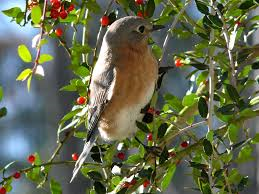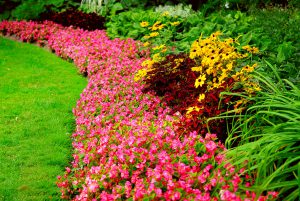Permaculture Garden Design Ideas

Connecting with nature outdoors is a great way in helping to promote our ecosystem, gardening is a privilege that allows us to embark upon such ventures as we do our part in using many gardening methods not only to create the garden of choice but also to provide a home, food source and shelter for wildlife.
Among the many visitors that come to our gardens besides wildlife are pollinators and beneficial insects however, there are other visitors that are not welcome (garden insect pests) which can cause much damage turning a dream garden into a nightmare these uninvited guests must be dealt with right away to avoid their destruction.
There is so much that goes into a garden to keep it healthy, vibrant, and buzzing with much activity, over the years many approaches have been taken in creating gardens making them look more natural along with finding natural ways that contribute to the health of the environment. One such garden that involves these garden methods is a permaculture garden.
What is a permaculture garden?
A permaculture garden works with nature instead of against it, the way this garden works is by taking advantage of the wind, water, and the sun. Other methods that are involved for example are using organic material such as grass clippings and leaves to recycle back into the soil. This technique is all-natural benefiting humans, wildlife, pollinators, beneficial insects, and soil microbes. Below we will be going more in-depth as we discuss 7 steps that will help you along the way as you create your very own permaculture garden.
7 Steps to Create a Permaculture Garden
1. Building your soil
Soil really does matter, at the root of growing healthy plants that will give a great yield or harvest is the soil. Soil is not dead as some would think but is buzzing with much life. It’s estimated that a single teaspoon of garden soil contains billions of soil microbes that are hard at work breaking down organic materials into a nutrient form which is taken up by the roots of plants.
A good garden soil will help to resist soil erosion, provide for good water drainage, nutrient availability, and uptake by the plant’s roots along with proper air circulation.
2. Water Conservation
Water is a symbol of life therefore we should do all that we can to conserve it, the key to water conservation is education. It is estimated that homeowners use 9 billion gallons of water daily in which 50% of this water is wasted in the garden because of overwatering and poor water practices.
Overwatering a garden causes the death of thousands of plants each year, If there is an area in your garden or landscapes where the water pools or collects consider constructing a swale. A swale is a slightly sloped ditch or a sunken mushy place that collects water, the main purpose of a swale is capturing and collecting water to avoid flooding.
3. Take advantage of plant integration

Plant integration is known as companion planting which is an all-natural way to control garden insect pests, this practice involves using certain combinations of plants in proximity to each other. These plants have the seem complementary characteristics such as growth habits, pollination, pest-repelling abilities, providing a habitat for beneficial insects, maximizing the use of space and nutrients requirements. This method can help you to save your hard earn dollars.
4. Mulches serves so many benefits
Mulches are a great organic material that can be used for so many purposes, a permaculture garden should take advantage of mulches. Mulches can be used not only for beautification but also in helping to suppress weeds, retain moisture for garden plants, as insulation, or protecting plant roots during the winter months, provides a habitat for soil microbes and insects.
As mulches begin to break down or decompose will add nutrients to the soil along with making the soil improvements, mulches serve many purposes benefiting in so many ways so take advantage of them.
5. Manage the edges
This technique is great in helping garden plants to take care of each other, using taller plants to frame the edges will protect shorter plants from the elements such as the wind rain, and the sun that is known as microclimate. Different groups of plants that are installed together create a difference in humidity, temperature, and shade. Beneficial insects, wildlife, and pollinators also benefit from this method.
6. Avoid chemicals
At all costs avoid the use of harmful chemicals, remember a permaculture garden is all about going natural, let nature take care of garden insect pests this way you will avoid contaminating the environment that can have an adverse effect on humans, pets, wildlife, beneficial insects and pollinators.
7. Maintain for success
I know that you have put in all that work, continue to work in your garden, the more time you put in the easier it will be to maintain what you have built. You owe it to yourself as you reap the rewards of a job well done. Sit back relax and enjoy as you focus on your work of art, not only will you enjoy your handy work but the many wildlife as you work hand in hand with nature making a great contribution to our ecosystem.
The Benefits of a Permaculture Garden
- Help to promote the health of the environment and our ecosystem
- Reduce cost
- Saving space
- No need for harmful chemicals
- Promotes green living
- Manage wastage
- Works with nature
- Connects humans to nature
- Develops community values
- Promotes biodiversity and maintaining wildlife
The final word on permaculture garden ideas
Permaculture gardens are here to stay because of the many benefits this garden offers as we work together with nature to promote our environment. This garden method not only benefits us along with the many wildlife and beneficial insects but can also help us to save those hard-earned dollars so let’s do our part as we take advantage of permaculture gardens that are making such a big difference.
About the author
Norman loves being in the garden, both at home and for his job....
he is 'Natures Little helper' being outdoors, growing his vegetables and flowers from an early age.
Now having spent over 22 years in the profession he want to give some of his knowledge to others...
his vast array of hints and tips you will find scattered over this site will help you no end growing plants in your garden.

Hi Norman,
Great and beautiful site. Superb design fitted to your post of flowers and plants gardening. You had indicated all necessary things on how to grow flowers/plants. You even mention not to use pesticides in plants, which is I admired the most.
Very good guide to those who wants to start their own garden.
Thank you. I enjoy reading your post.
Al
Thank you so much I am happy to have helped.
Hi Norman,
Thanks so much for sharing a great article to learn more about what is Permaculture garden Design Ideas, at home, we have our small garden in the back yard, my husband does most of the work of planting the plants and keeping the garden in good shape, this year I got interested on growing some plants from the seeds at home and trying new plants, we got some success and we are happy to pick fresh organic vegetables to have in every meal during the warm Summer. I must add we avoid using any food plant ready to use, this year we could noticed our neighbours started a small garden, we could see it from our property (we live in the country), for our surprise, their garden made a huge progress, their plants were growing so good and so tall, our garden looked so small, and my question was: how come two gardens in two propeties side by side can get so different results, my husband and I got the feeling, we are growing a permaculture garden, only natural growing, nothing about quemical plant food. What do you think?
Hello, it is so good to meet you, and thanks for sharing your story with me, First you need to consider what your neighbors are growing and how they are growing what they are growing. Are they growing the seem type plants you are growing and if yes how are they maintaining them.
What type of soil are they growing in, what is the maintenance practices or procedures, there is no easy way to give you a direct answer except to do some investigation. I hope this helps and please let me know how it goes. have a good day!
Thank you for all these great tips. We have been trying to improve our existing garden and plant plants that don’t need constant care. A lot has died, so reading this I was wondering if it was perhaps because the soil wasn’t prepared properly beforehand. Is making compaste a good way to get the soil working well again? We have a heap that we throw all our vegies that go off or the peels into, so maybe that will help?
Soil plays a major part in a plant’s life so garden soil should be at the top of the list. Compost can work wonders, it’s all-natural with tons of nutrients so go for it. There are other factors to consider also but let’s start with the compost first and see what happens. Please let me know how it goes. Wishing you the best of success.
I also have a small vegetable and vegetable garden. I’m avoiding chemicals. Your post is welcome to me. Among other plants I have many roses. To ward off pests, we planted lavender near them. But I have a big problem and please give me a piece of advice: every year I have a lot of small snails that damage the garden, and although I always collect them manually, I can’t get rid of them. Thank you.
Hello so good to meet you, thanks for sharing your success story. I am so sorry to hear of your snail issues, maybe this can help. Please let me know how it goes, all the best of success.
https://gardenofedengardencent…
I like the idea of the Permaculture garden. The article gives me useful information about the basic concept of creating the Permaculture Garden.
Soil preparation is indeed important for growth, I mixed sand, wood dust, clay, and dark soil with 20:20:30:30 ratio for my garden. In my garden I have one inch PVC pipe buried one foot underground for the purpose of watering. The 3rd step is plant integration, which I am lack of knowledge. I plant a few papaya trees as a shed for my pottery flower only. What I lack is the knowledge about plant characteristics such as growth habits, pollination, pest-repelling abilities. Thanks for the information.
I also like to use Mulches as you have mentioned in the step 4. Step 5, manage the edge is my garden strength of garden plants to take care of each other. For sure, I strictly not using any chemicals and cats like to bite the grass, leaves in my garden and often shit inside. I do use some organic fertilizer to help grow more fruits. I saw all kinds of inserts coming to my garden, but not causing any harm to the plant except any snails eats the green vegetable only. I welcome pollinators, but not sure about microbes, it could be hard to see with our eyes.
Hello, thanks so much for sharing your gardening experience with me, Soil microbes can no be seen with the naked eye but we can help them however by giving them what they need seeing that they work so hard for us.
https://gardenofedengardencent… Wishing you the best of success, have a good day!